On January 14, 1896, the Swedish explorer Sven Hedin set out from Jotan, a city on the ancient Silk Road in the Taklamakan desert, in the far west of China. He was accompanied by four men with three camels and two donkeys, loaded with provisions for 50 days following the course of the White Jade River (today Yurungkash), named for the enormous amount of alluvial jade that he transported.
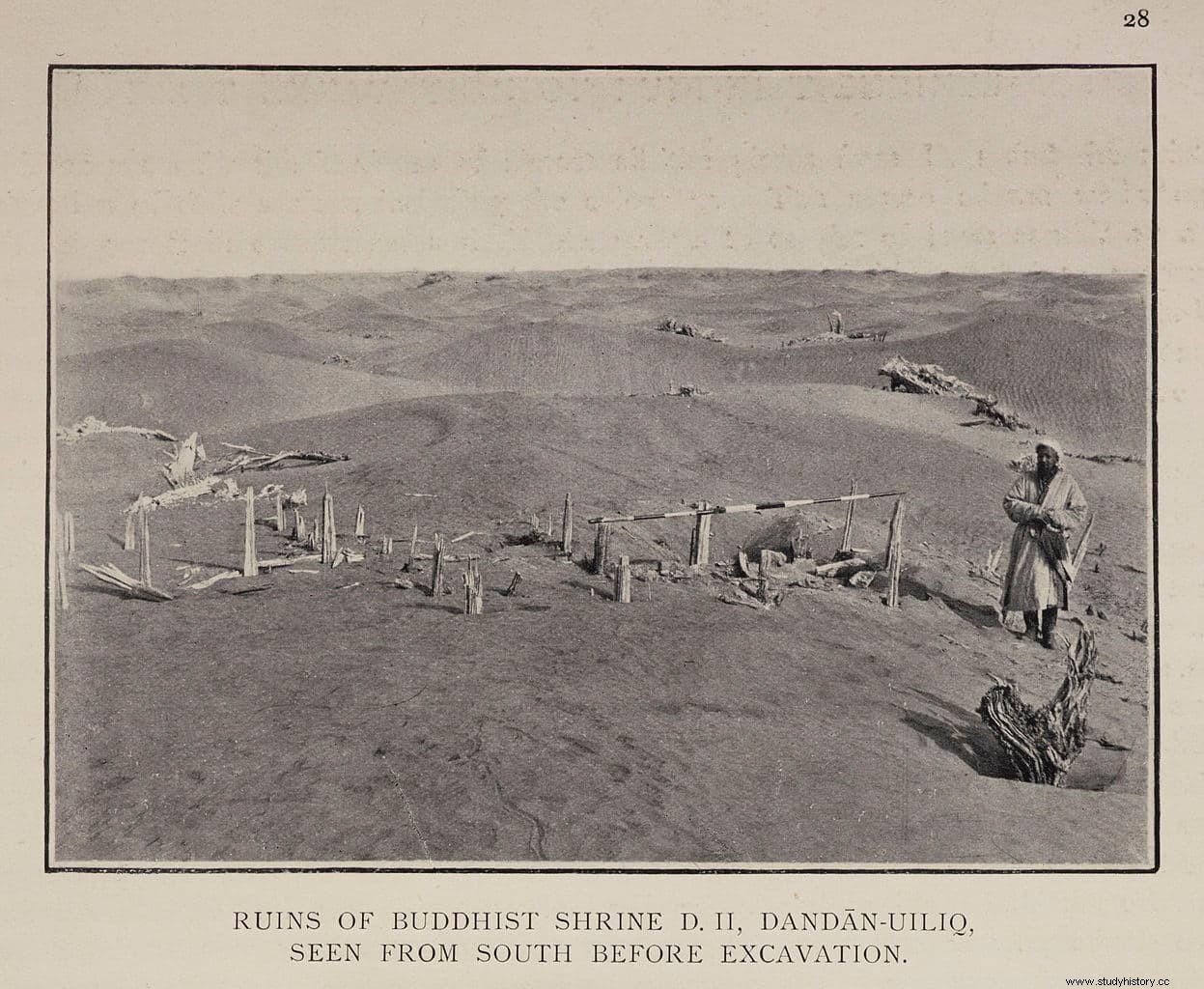
After five days they abandoned the Del Río course and entered the desert, heading east through dunes more than 15 meters high. On January 24, in the middle of the desert, they found some ruins.
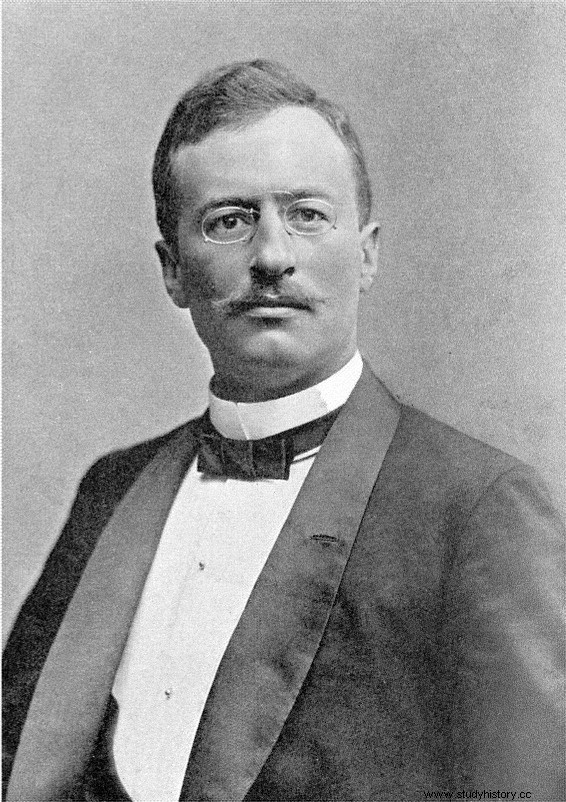
Hedin quickly realized that these ruins were unlike anything he had seen before.
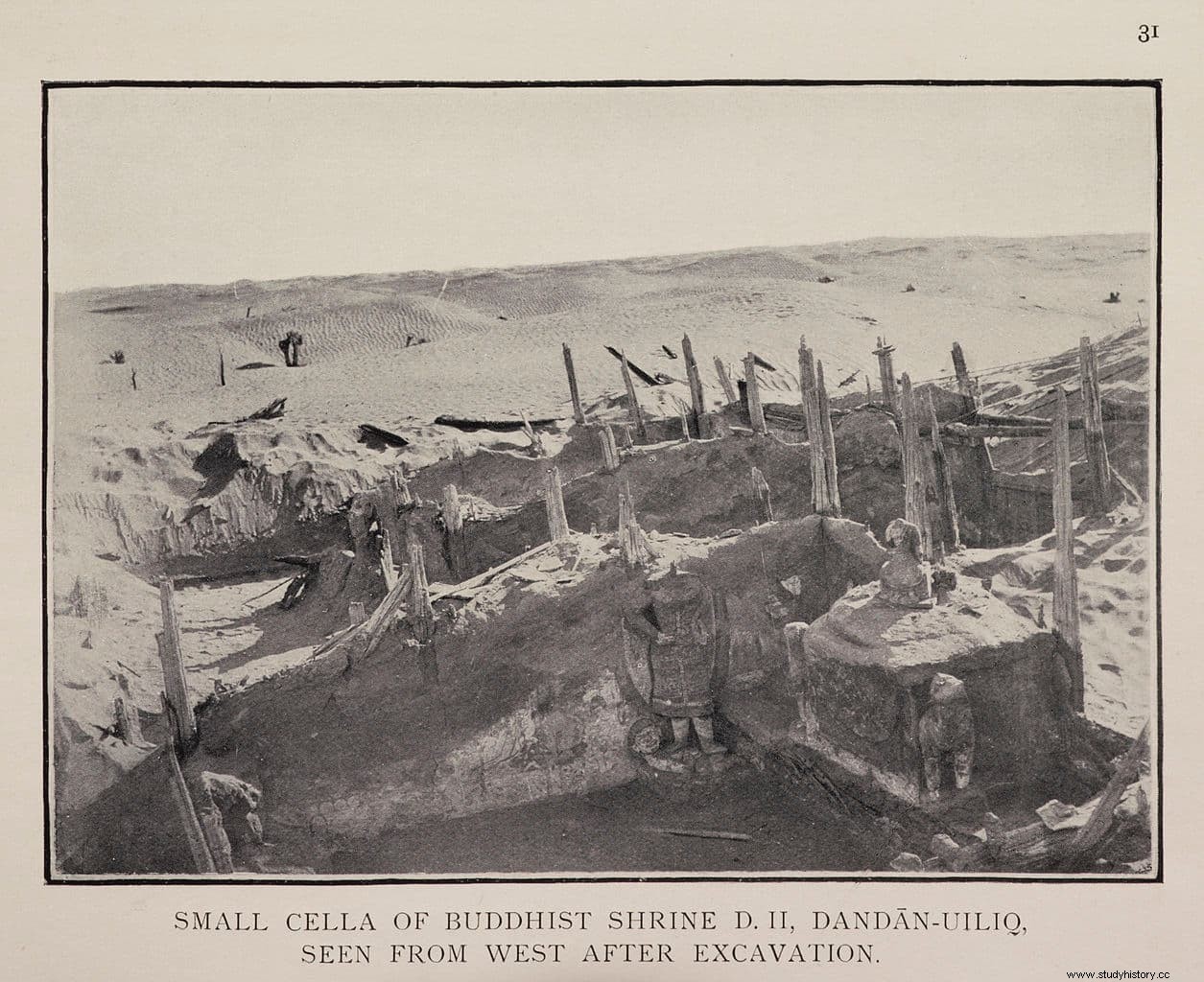
What he did notice was the dimensions of his discovery, hundreds of wooden houses, a Buddha temple with wall paintings and numerous sculptures, and abundant fragments of paper with characters that he was unable to decipher.
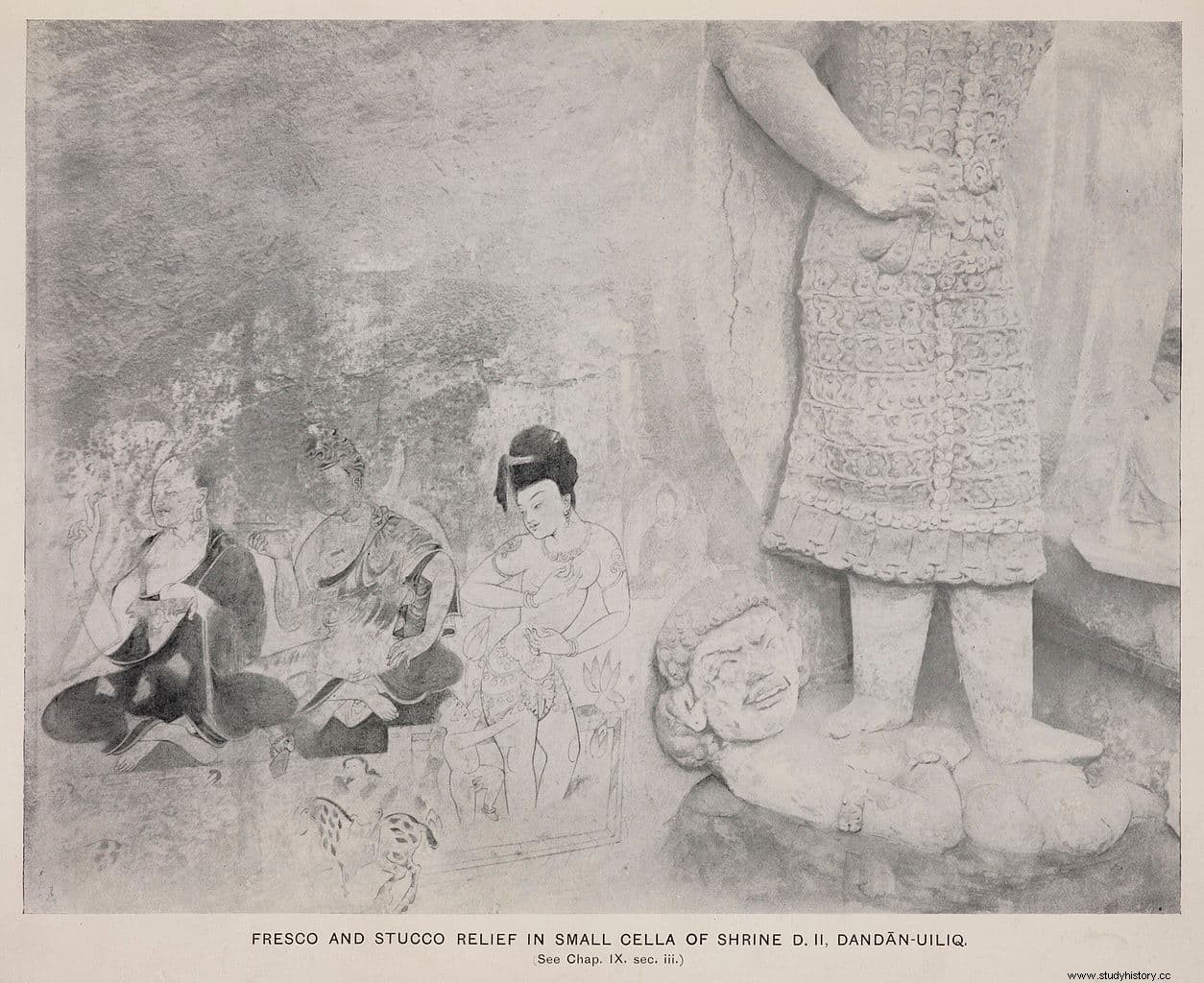
He had found the city of Dandan Oilik, lost in the desert sands for more than a thousand years. Hedin and his companions tried to bring the ruins to light, but they soon saw that it was arduous work, since the sand instantly filled everything they dug up.
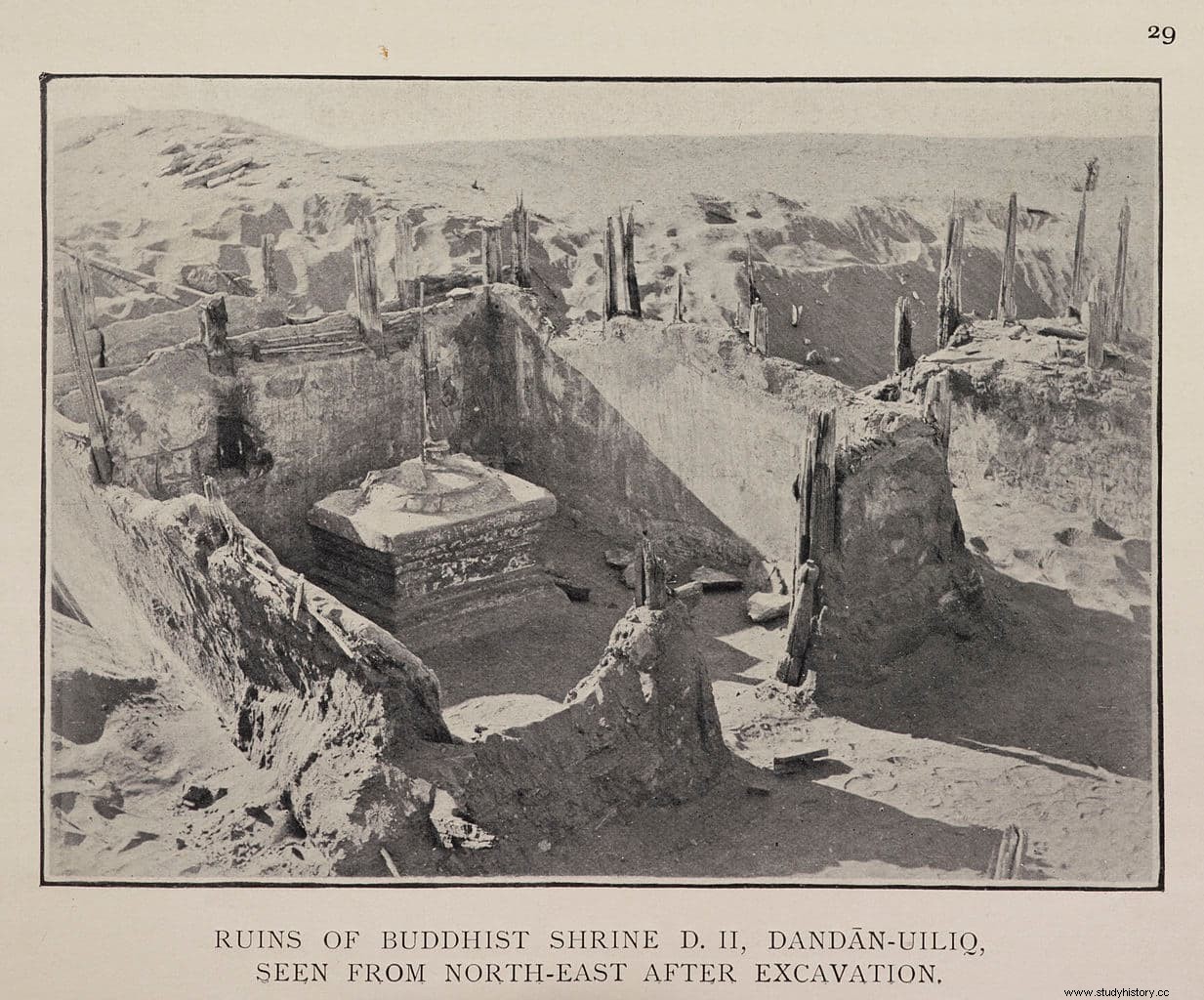
Although he was unable to retrieve the general plan of the city, Hedin found traces of gardens, rows of poplar trees indicating ancient avenues, and remains of ancient apricot and plum trees, concluding that the walls of this city cursed by God, this second Sodom in the desert, they had been washed in ancient times by a mighty stream – the Keriya-daria .

The city had flourished since the 6th century AD. on the southern branch of the Silk Road, being abandoned towards the end of the 8th century. Four years after Hedin rediscovered it, in December 1900, the famous archaeologist Aurel Stein was in Hotan. There a treasure seeker he showed her fragments of mural painting, stucco reliefs and paper documents, which he claimed to have obtained from Dandan Oilik. So Stein assembled a team of about thirty people and headed there to start the excavations.
Stein found dwellings, Buddhist shrines, sculptures, wall paintings, Buddhist texts on paper, and wooden tablets.
Other archaeologists and geographers visited the site in subsequent years, but after Stein's inspection the site remained largely untouched for 90 years, until the Xinjiang Archaeological Institute took over and, in 2002, discovered a new Buddhist temple with paintings.

However, most of the site remains unexcavated to this day. There are hardly any photographs of the place on the internet, which remains half-buried in the sand, and visits to Dandan Oilik are strictly prohibited.
